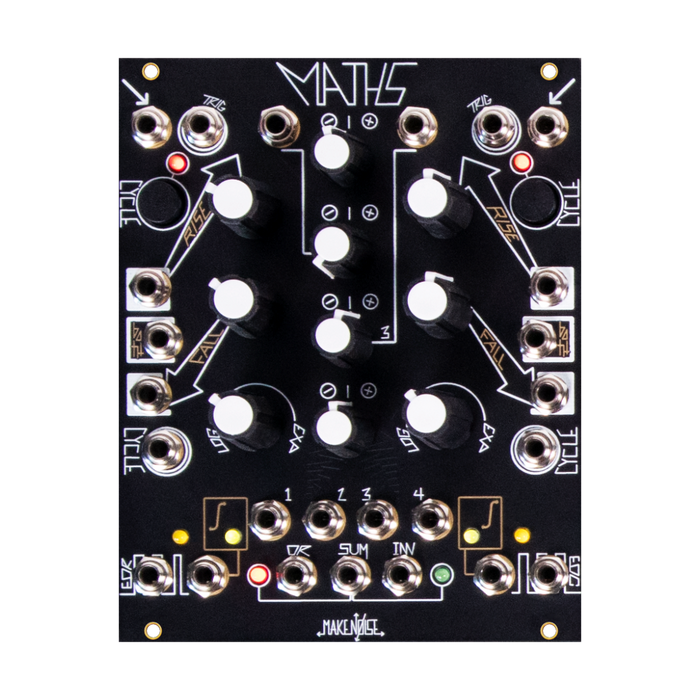
Make Noise Maths
¥49,900
(Tax excluded ¥45,364)
A classic CV generation / modulation monster that has become a classic with an exquisite combination of functions!
Attenuator/Offset
Envelope Follower
Envelope Generator
LFO
Logic
Mixer
Slew Limiter
Trigger Delay / VC Gate / Burst Generator
Format: Eurorack
Width: 20HP
Depth: 24mm
Current: 60mA @ + 12V, 50mA @ -12V
Japanese manual pdf
Manual pdf (English)








